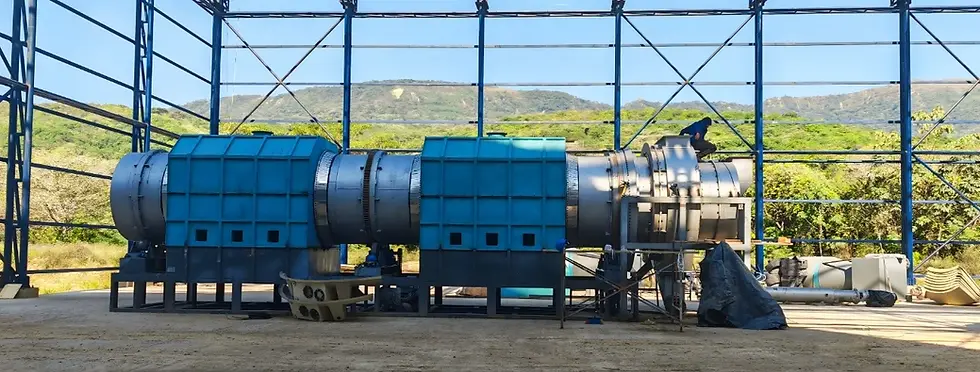Pyrolysis Gas Utilization: Energy Recovery Inside the Waste Plastic to Oil Machine
- lee784287
- 6月16日
- 讀畢需時 2 分鐘
The waste plastic to oil machine serves as a critical solution in converting synthetic polymer waste into usable hydrocarbon fuels. Beyond producing pyrolysis oil and carbonaceous residues, one of the most underutilized yet technically significant byproducts is non-condensable pyrolysis gas. When efficiently managed, this syngas becomes an internal energy source, dramatically improving the machine’s overall thermal efficiency and reducing external fuel dependency.
Nature and Composition of Pyrolysis Gas
During the thermal decomposition of plastic polymers in an oxygen-deficient environment, complex molecular chains are broken down into a mixture of condensable vapors and light gases. The gaseous fraction, typically rich in hydrogen (H₂), methane (CH₄), ethane (C₂H₆), carbon monoxide (CO), and other low molecular weight hydrocarbons, holds significant calorific value. The exact composition varies depending on the plastic feedstock, temperature gradient, and residence time inside the reactor.
Closed-Loop Thermal Recovery System
A well-designed waste plastic to oil machine integrates a closed-loop combustion system where pyrolysis gas is immediately redirected to serve as a supplementary heat source. This is accomplished through the following process:
Gas Separation: Post-cracking, the syngas is routed through a condensing chamber. While heavier fractions cool and condense into oil, lighter fractions remain in the gas phase.
Storage and Pressure Regulation: The gas is temporarily stored in a buffer tank equipped with pressure regulators and flame arresters to ensure safe and controlled combustion.
Combustion Chamber Reuse: The stored gas is then piped back to the burner system of the main reactor, where it supports or replaces conventional fuels like diesel or natural gas.
This reuse loop significantly cuts operational costs and contributes to energy autonomy, especially during prolonged continuous operation cycles.

Efficiency Gains and Environmental Impact
Incorporating pyrolysis gas combustion within the pyrolysis plant yields substantial energy savings—often exceeding 30%—depending on design optimization. Thermal lag is reduced, fuel preheating becomes more consistent, and reactor temperature stabilization improves.
Environmentally, using internal syngas lowers external fossil fuel demand and curbs total greenhouse gas emissions. Since the gas is generated from waste plastics already undergoing transformation, its combustion aligns with circular economy principles. Moreover, modern systems integrate desulfurization and particulate filtration units to ensure that the gas combustion process meets environmental compliance standards.
Design Considerations
For optimal gas utilization, engineering design must address several variables:
Gas flow rate and pressure stabilization
Real-time temperature modulation
Corrosion-resistant piping and combustion components
Safety interlocks and emergency shutdown mechanisms
High-performance waste plastic to oil machine models include automated control systems that manage gas distribution based on reactor temperature feedback, enabling adaptive combustion support.
Conclusion
Pyrolysis gas utilization is not merely a byproduct strategy—it is a cornerstone of energy recovery in plastic-to-fuel technologies. By transforming internally generated gaseous hydrocarbons into usable thermal energy, the waste plastic to oil machine maximizes input efficiency, minimizes emissions, and advances self-sustaining waste-to-energy processing. This closed-loop capability represents a significant stride toward industrial decarbonization and smarter waste valorization.



留言